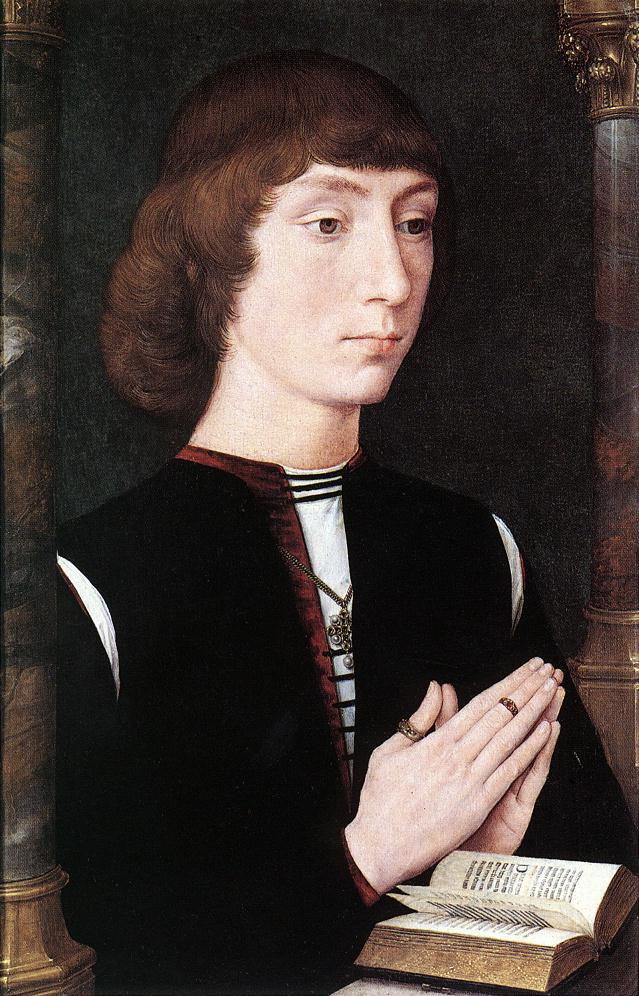Description
The painting "Young Man at Prayer" by the artist Hans Memling is a masterpiece of Flemish art from the 15th century. The painting represents a young man kneeling in prayer, with his hands folded and his eyes turned towards heaven. The figure is dressed in an elegant suit and wears a wide-brimmed hat.
Memling's artistic style is characterized by his attention to detail and his ability to create a sense of depth and perspective in his works. In "Young Man at Prayer", the figure of the young man is carefully outlined and stands out against a dark and austere background. The composition is symmetrical and balanced, with the young man in the center and a column on each side.
Color is another interesting aspect of this painting. Memling uses a limited palette of soft, muted tones, creating a serene, contemplative atmosphere. The decorative details, such as the brocade on the young man's suit and the lace on his neck, are painted with great precision and realism.
The story behind the painting is also fascinating. It is believed to have been commissioned by a wealthy merchant in Bruges as an object of personal devotion. The figure of the young man could be a representation of the merchant himself, or perhaps a member of his family. In any case, the painting reflects the importance that religion had in the daily life of the time.
A little-known aspect of the painting is that Memling used innovative techniques to create a sense of depth and space in the composition. For example, the young man's hat extends beyond the top edge of the painting, suggesting that he is stepping out of the image and into the real world. Also, the dark background and column on the right create a sense of depth and perspective that is impressive for a painting of this size.
In short, "Young Man at Prayer" is an exceptional work of art that combines technical skill, religious sensibility, and an innovative vision of composition. It is a showcase of Hans Memling's talent and a window into 15th century life and culture in Flanders.

